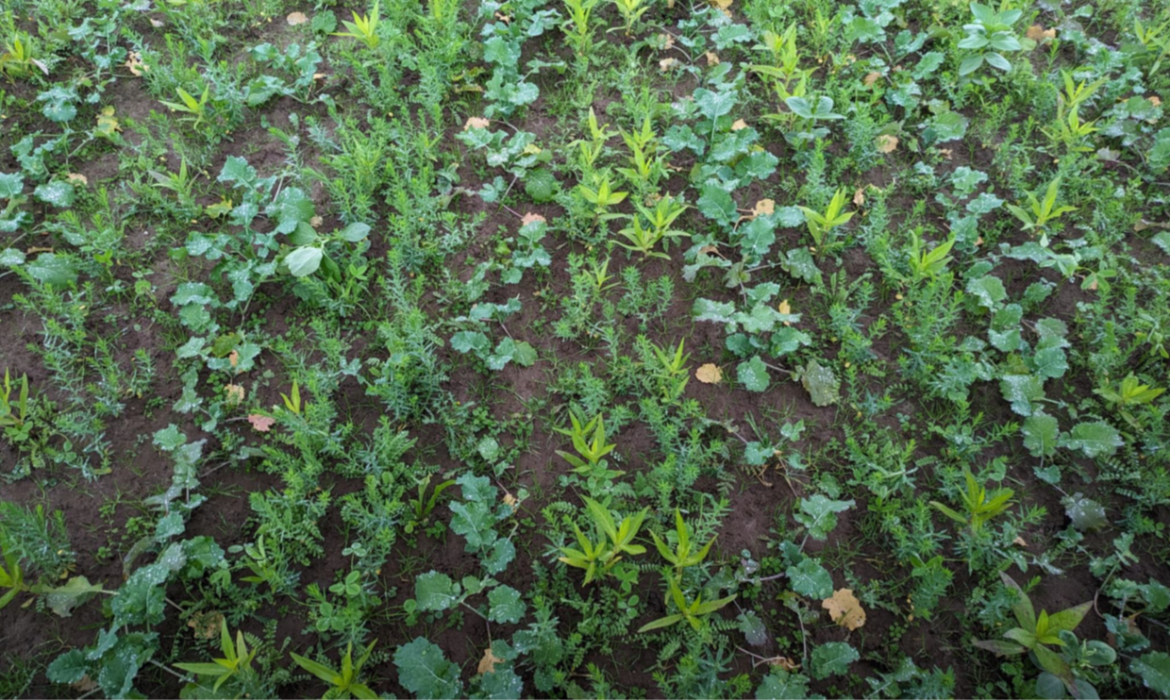
CRF trial: Rape
In addition to wheat, we grew rape as a second crop in 2023/2024 using the CRF method. However, the trial did not yield any conclusive results as a result of a heavy pest infestation, which is why we only give a brief summary here.
Trial design
Whereas the Centaya 3000 Super + rotary cultivator was used for sowing the conventional variant, we used the Precea 6000-2FCC for the CRF variants. The undersown crops were sown separately for the last time this season (Centaya 3000 Super + rotary cultivator). This is now possible in a single pass with our trial machinery.
No companion plants were sown in the CRF-V1 variant. The BrassicaPro mixture with serradella, linseed, field bean, Egyptian clover, Persian clover and niger seed was also applied during sowing in CRF-V2. Serradella and buckwheat were sown in CRF-V3 during the hoeing pass in autumn. In addition, white clover was sown by drone in spring, since a second hoeing pass in mid/late March was not possible due to the weather conditions.
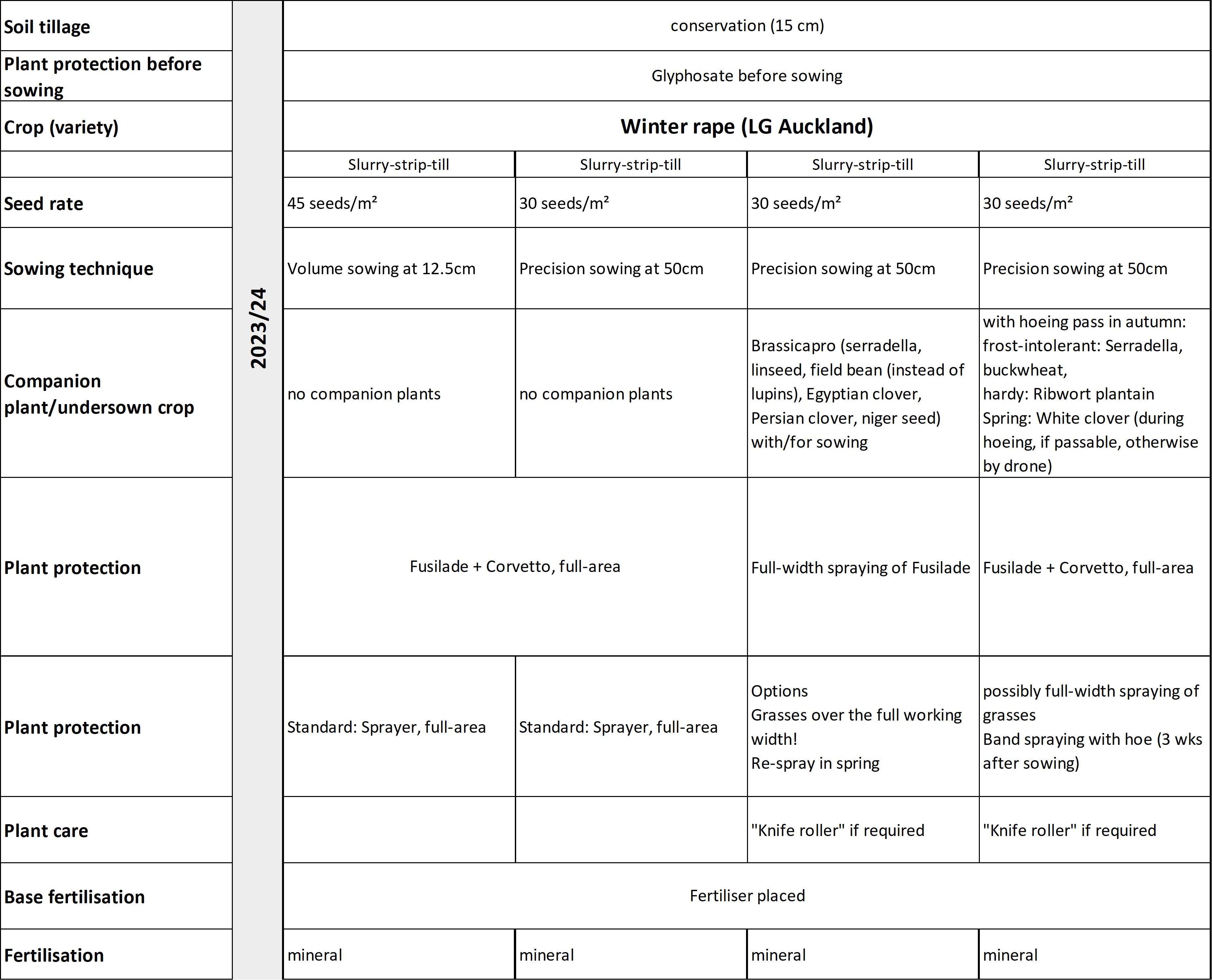
The companion plants in CRF-V2 profited from the early sowing and were well established before winter. This was not the case for the plants sown in mid-October in CRF-V3. These developed poorly or not at all or were immediately killed by frost. The clover also left much to be desired, with poor emergence after sowing.
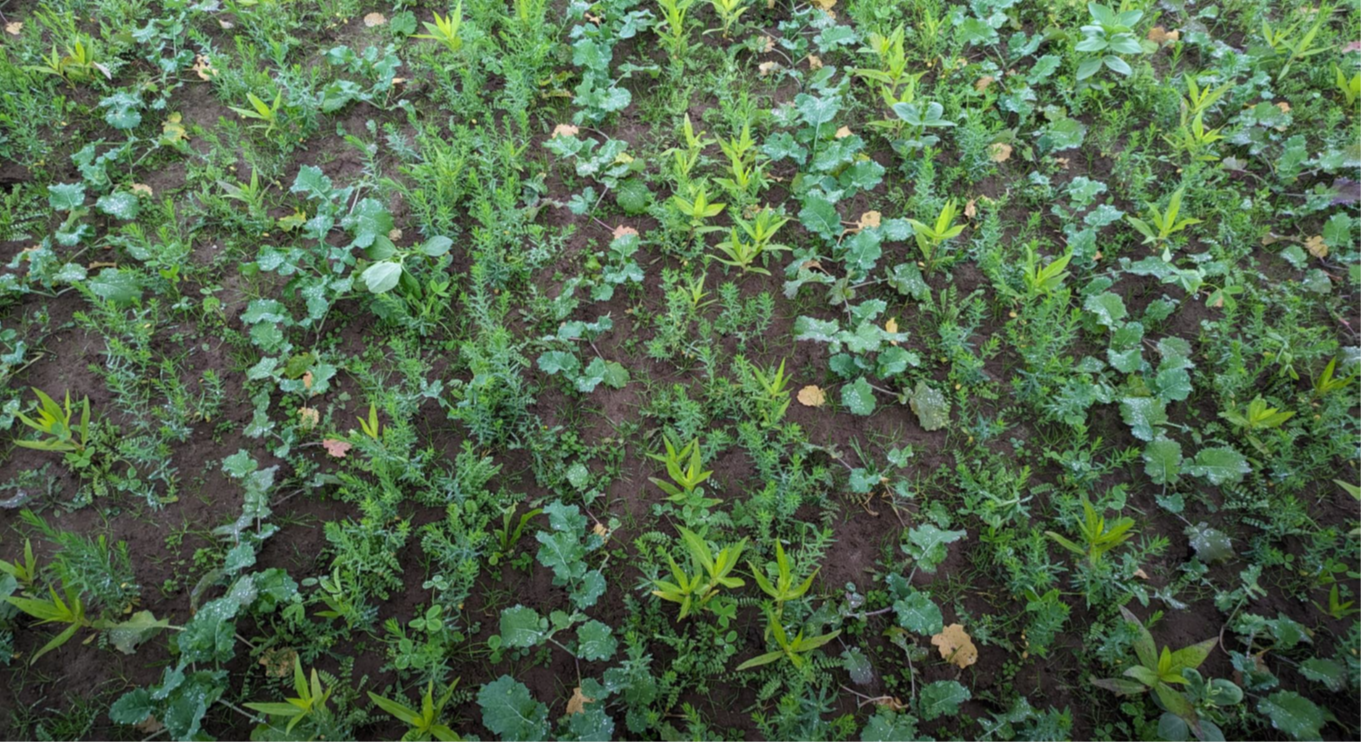
Photo taken on 5th October 2023
We used the UF2002 with FT1001 and the ZA-V4200 for the fertilisation measures. The crop protection measures were carried out with the UX5201 Super.
Development in the field
The rape had to contend with various adverse events. Development in autumn was significantly affected by high rainfall after sowing. A heavy rape winter stem weevil infestation then occurred in autumn – in spite of an insecticide measure. Depending on the variant, up to 75 % of the plants had been affected by the end of March. The significantly lower infestation in CRF-V2 is worth mentioning. The undersown crop with DSV Terralife BrassicaPro obviously had a positive effect here – the companion plants probably attracted the interest of the rape winter stem weevil, thereby “distracting” it from the rape.
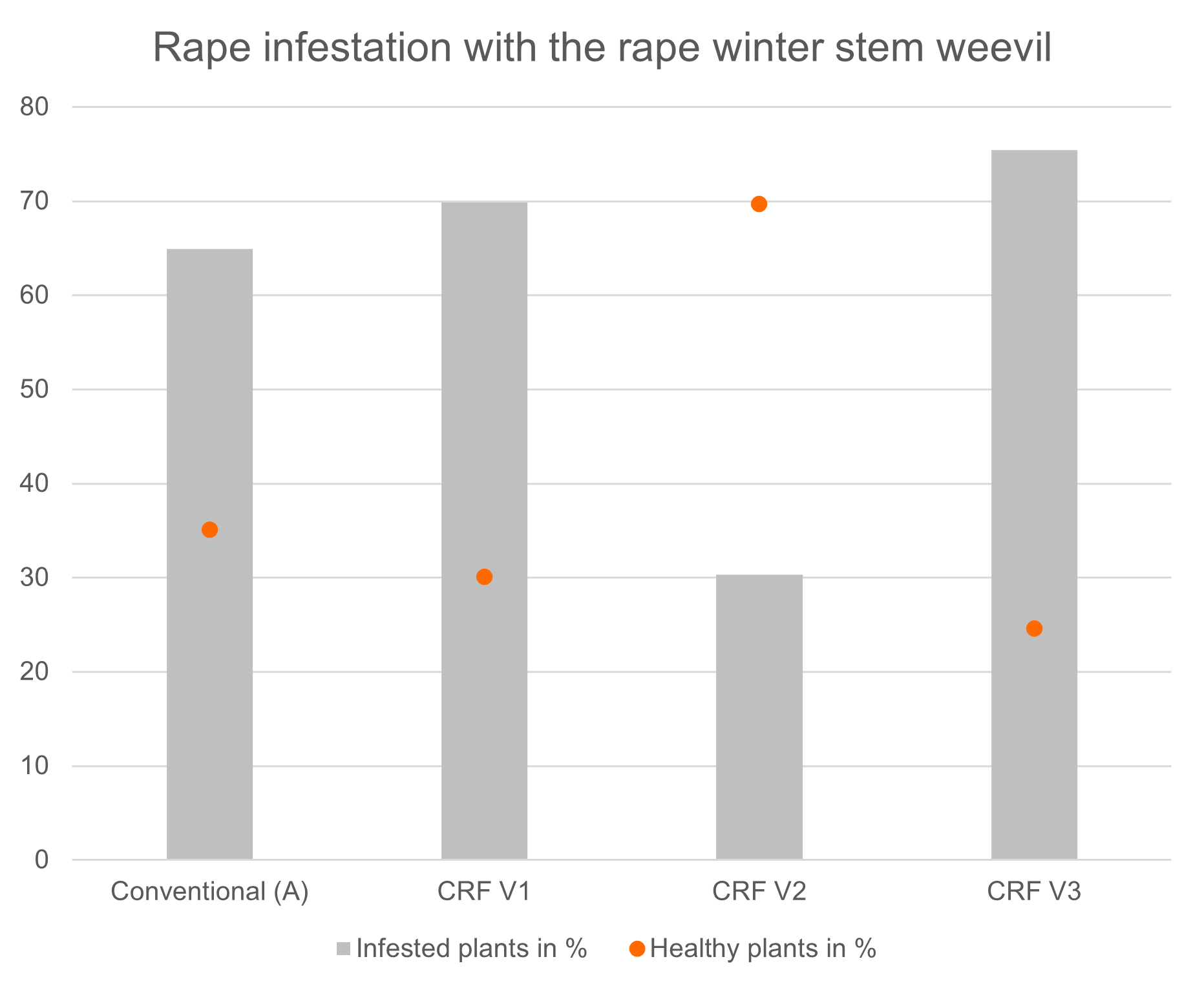 As can be seen from the assessment, the infestation rate is very high in all variants. It is striking that in variant C with the BRASSICAPRO mixture, the infestation rate was up to 57% lower than without companion planting. This suggests that companion plants have a distracting effect on the black cabbage shoot weevil and thus support the rape in its development.
As can be seen from the assessment, the infestation rate is very high in all variants. It is striking that in variant C with the BRASSICAPRO mixture, the infestation rate was up to 57% lower than without companion planting. This suggests that companion plants have a distracting effect on the black cabbage shoot weevil and thus support the rape in its development.
The significantly weakened crop was subsequently unable to develop well. Furthermore, the plants had to contend with extreme chickweed pressure in CRF-V1. The weed established itself so well that it pulled down the rape and provided pigeons and other birds with an ideal landing space.

The weakened plants formed a large amount of side stems, and the flowering phase was subsequently extended to approx. eight weeks.
Additional challenges
We recorded a significant increase in damage done by mice in CRF-V2. It appears that the rodent pests found more places to hide due to the ground cover. Mouse poison was put down as a response. The additional placement of raptor perches proved successful, with birds of prey regularly sitting at the edge of the field after just two weeks.
Delayed development was observed in the CRF-V3 variant. This is attributable to the hoeing pass in autumn, which was carried out under wet weather conditions and led to soil capping.
Harvest and yield
At 25.33 dt/ha, the yield was average for the region. However, we have dispensed with further evaluations as a result of the significant weakening of the crop. The only thing to mention here is that the grain yield was best in CRF-V2, while CRF-V1 suffered high yield losses due to chickweed and damage done by pigeons.
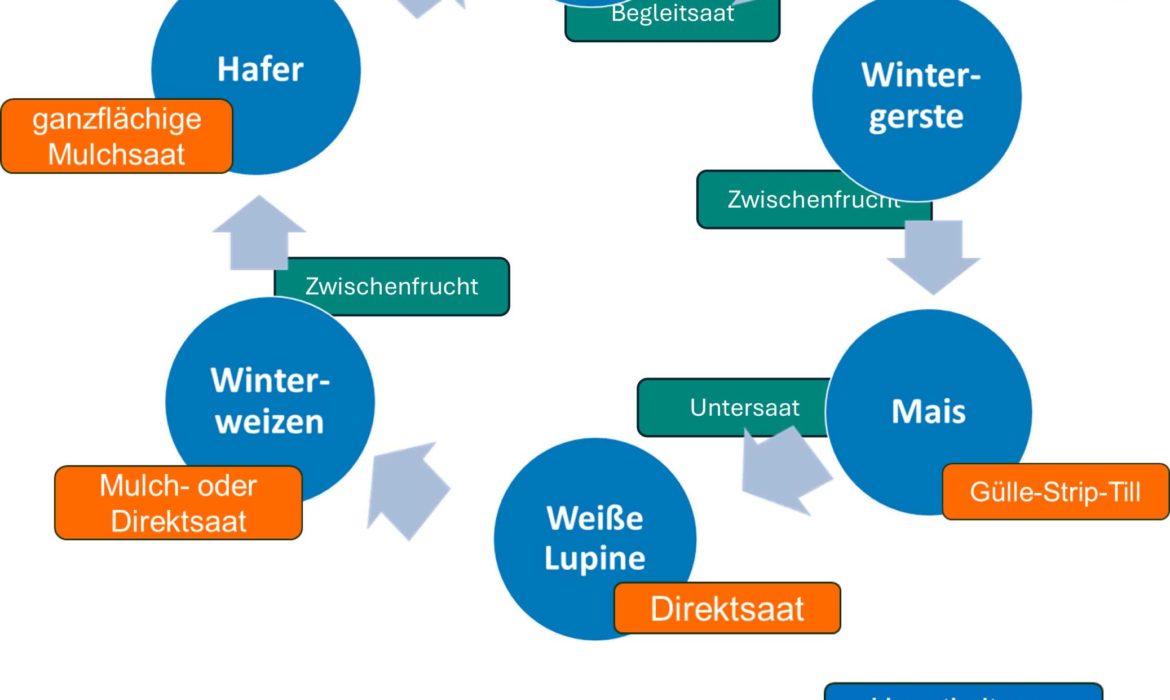
CRF crop rotation – How could crop rotation be implemented in the CRF arable farming system?
The second arable farming dialogue took place during this year’s AMATECHNICA at AMAZONEN-Werke. The Controlled Row Farming (CRF) farming concept was the main topic of the event. Precision Farming trials and a comparison of direct vs. mulch sowing at Gut Wambergen were also presented.

